There aren’t many plants that can be categorized as thriving in dry shade. Early meadow-rue (
Thalictrum dioicum) is an often-overlooked, medium-size woodland native plant with delicate, columbine-like foliage and subtle flowers that performs really well in dry shade.
Its subtle flowers need to be appreciated up close; the male flowers are especially interesting, resembling small lanterns. With the slightest breeze, the dangling anthers flutter in the wind and release pollen to be transported to awaiting female flowers on separate plants. For this reason, it is important to purchase several plants to ensure that you get both male and female plants. After the spring flowering finishes, enjoy the delicate texture of the foliage through the summer months.
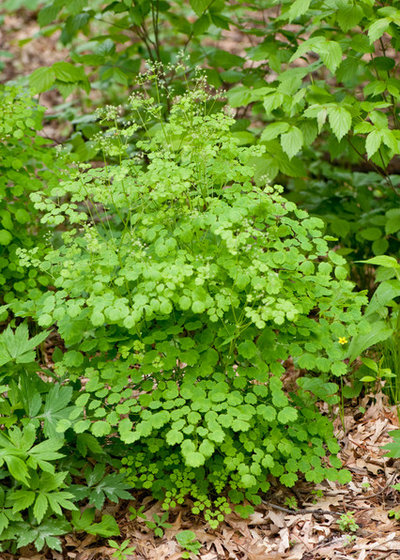
Holm Design & Consulting LLC
Botanical name: Thalictrum dioicumCommon name: Early meadow-rue
Origin: Early meadow-rue occurs in eastern North American woodlands, from the states bordering the Mississippi River (except for Oklahoma, Texas and Louisiana) eastward to Maine in the north and to Georgia in the south; it is rare in North Dakota southward to Kansas; in Canada it occurs in Ontario and Quebec
Where it will grow: Hardy to -45 degrees Fahrenheit (USDA zones 2b to 7a; find your zone)
Typical plant communities: Mesic (semidry) to dry deciduous woodlands in upland sites.
Soil requirement: Mesic to dry, sand to clay-loam soil
Light requirement: Shade to partial sun
Mature size: 18 to 40 inches tall and 12 to 15 inches wide
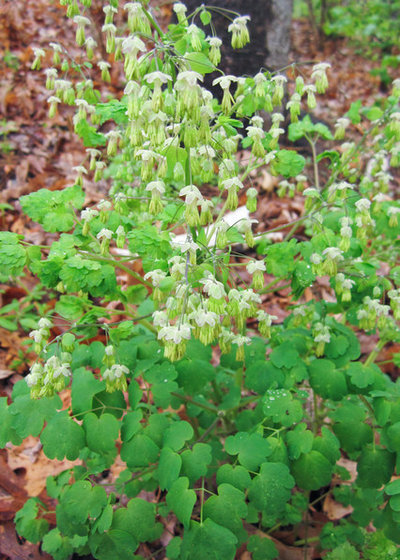
Holm Design & Consulting LLC
Benefits and tolerances: Tolerates most soils and does well on dry, wooded slopes
Seasonal interest: Lacy foliage and upright flower stalks; flowers begin to open in April or May, depending on latitude (will bloom earlier in southern U.S. climates). The plants have either entirely male flowers or female flowers — male flowers provide more interest.
When to plant: Spring or fall; potted plants are available from many native-plant nurseries
Distinguishing traits. Early meadow-rue has delicate, lacy foliage that resembles that of columbine (
Aquilegia spp). Its flowers are subtle: The female flowers are very tiny, and the male flowers resemble Japanese lanterns. The anthers on the male flowers (shown here) dangle downward and tremble in the slightest breeze.
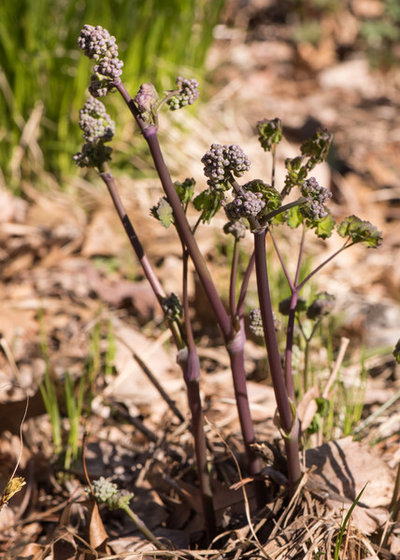
Holm Design & Consulting LLC
Shown: New leaf and flower stalks emerging in early spring
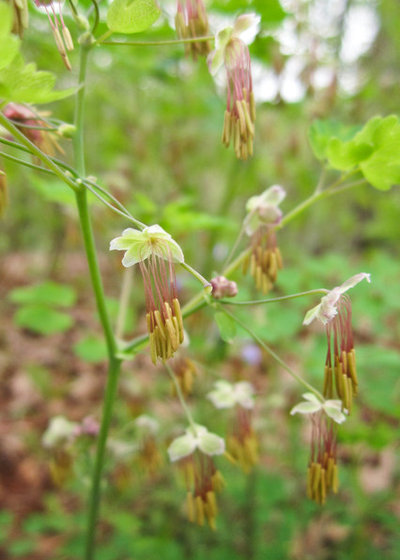
Holm Design & Consulting LLC
Planting notes. Mature plants can be transplanted, but it’s better to attempt transplanting smaller plants or seedlings. Fall is the best time of year for transplanting larger plants; seedlings can be moved in spring or fall.
Early meadow-rue thrives in partial shade in dry woodlands. It is a very robust and adaptable woodland plant, compared with some of the more delicate spring-flowering woodland plants. The new leaf and flower stalks are browsed by deer. Protect the shoots once they emerge from the ground with a wire exclosure or sharp sticks inserted around the plant.
Shown: Male flowers, with the developing anthers dangling downward
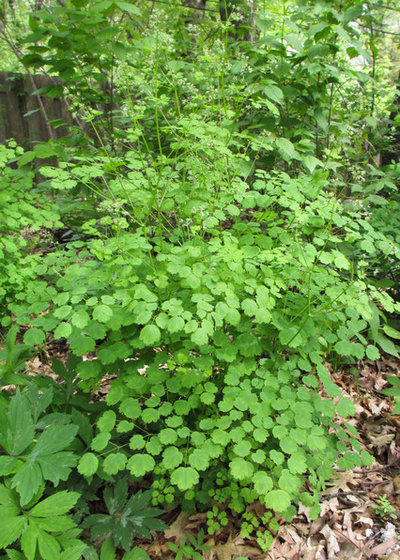
Holm Design & Consulting LLC
Pollinator notes. Early meadow-rue is unusual; it is one of a few flowering woodland plants that are wind pollinated. On rare occasions you may observe bees collecting pollen from the male flowers, but overall this is not considered a pollinator plant.
Shown: A mature plant with female flowers
More:Browse plants native to other regions of the U.S.
5 Unsung Wildflowers That Thrive in Dry Shade





